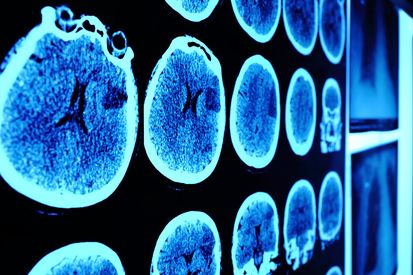
(Vienna, 30 April 2019) The renowned online scientific journal JoVE videos study experiments with the aim of improving the reproducibility of biomedical experiments. The journal has now invited the Radiochemistry and Radiopharmacy working group from MedUni Vienna’s Division of Nuclear Medicine to have its Positron Emission Tomography (PET) study experiments filmed as a documentary. The team has successfully visualised the key brain receptor for appetite control by radioactively marking a molecule. However, it was known from animal experiments that this molecule does not occur in sufficient quantity in the brain. Using a cell-based method, the team has now managed to demonstrate, for the first time, that it is actually ejected.
A well-known problem in medicine, biology, immunology and the neurosciences is that, for various reasons, experiments are not always equally reproducible for all researchers. This is often due to a failure to explain the applied technology clearly and the results often deviate from the original study results. The Journal of Visualized Experiments (JoVE) is working to remedy this and offers a user-friendly platform to promote scientific exchange. JoVE documentaries usually include a detailed written description of the experimental arrangement, a video and explanatory comments from the study authors.
Radiopharmacists Cécile Philippe and Chrysoula Vraka from the Division of Nuclear Medicine of MedUni Vienna's Department of Biomedical Imaging and Image-guided Therapy have now been invited to have a documentary made about their studies in the context of the biomedical imaging technique Positron Emission Tomography (PET), with a view to it being posted on the platform. A PET scan involves a radioactively marked substance – a so-called PET tracer – being administered to patients so that its distribution within the body can then be measured. Using such tracers, it is possible to produce a 3D visualisation of certain receptors and metabolic processes in the body. The technique is primarily used in cancer diagnosis.
The aim of Philippes’ study was to visualise the receptor MCHR1, which is involved in neuronal appetite control. She succeeded in doing this by developing the radioactive molecule SNAP-7941 as the first PET tracer that can be used to visualise the receptor in question. The problem was that it had been assumed, from animal experiments, that, although SNAP-7941 finds its way into the brain, not enough of it is retained there. This is due to the Blood-Brain Barrier (BBB) that every organism has to defend itself against foreign substances. This stops potentially harmful substances as they pass from the bloodstream into the brain and transports them back out again. This is done by so-called efflux transporters at the BBB, which act a bit like revolving doors. Despite successfully passing over, undesirable molecules – in this case SNAP-7941 – are turned back again and ejected into the bloodstream.
Vraka has now developed a new method using a cell-based model from canine kidney cells, which have similar properties to those of the BBB and has, for the first time, managed to show that the SNAP-7941 PET tracer is actually a substance that is discharged back out of the brain. This therefore enabled the functional capability of this model to be demonstrated. These research results are important, because ejection is a common problem in the development phase of tracers for brain imaging and is normally only identified in animal experiments. Another aim of this method development was therefore to be able to reduce the number of animal experiments in future.
The video shows the preparation of the radioactive SNAP-7941 and how the quality of this PET tracer is checked. It also shows the experimental method used to demonstrate the mechanism for transporting the SNAP-7941 PET tracer out of the brain. LINK to the video
Service
"Technical aspect of the automated synthesis and real-time kinetic evaluation of [11C]SNAP-7941" Chrysoula Vraka, Verena Pichler, Sarah Pfaff, Theresa Balber, Marcus Hacker, Markus Mitterhauser, Wolfgang Wadsak, Cecile Philippe.